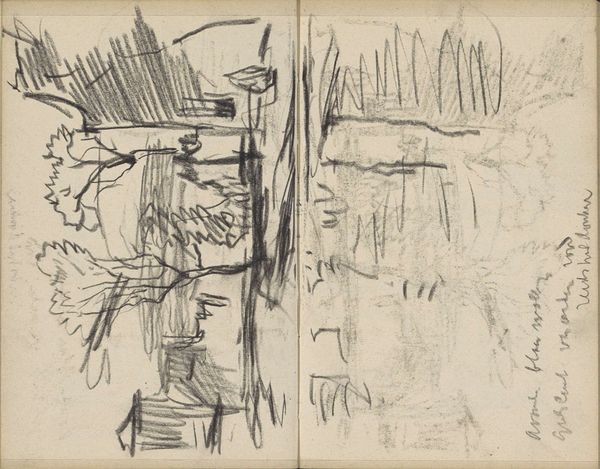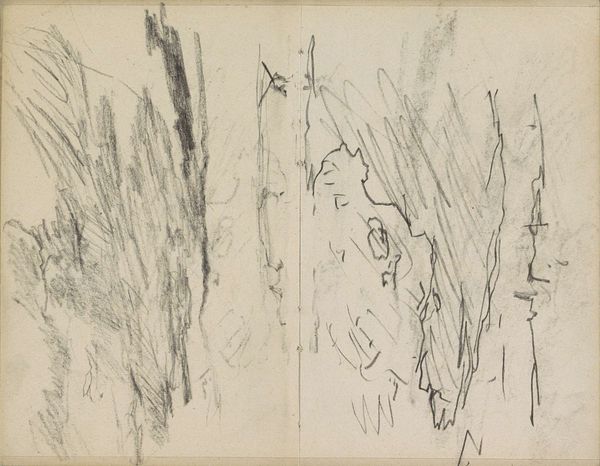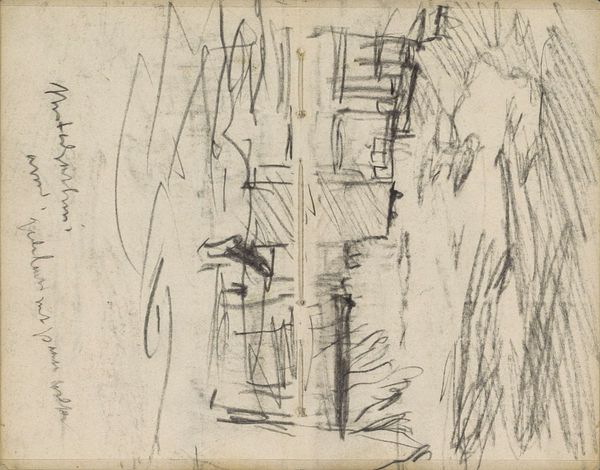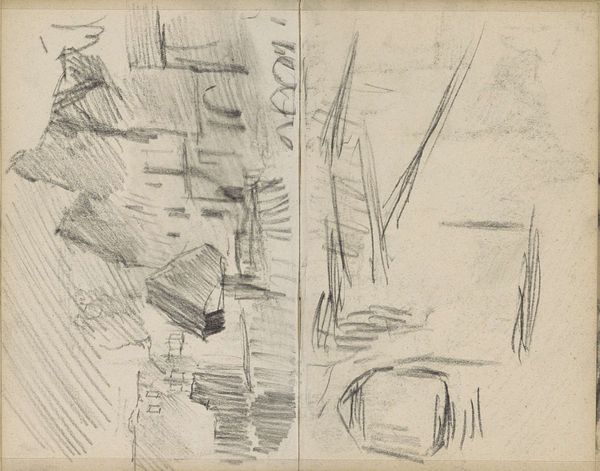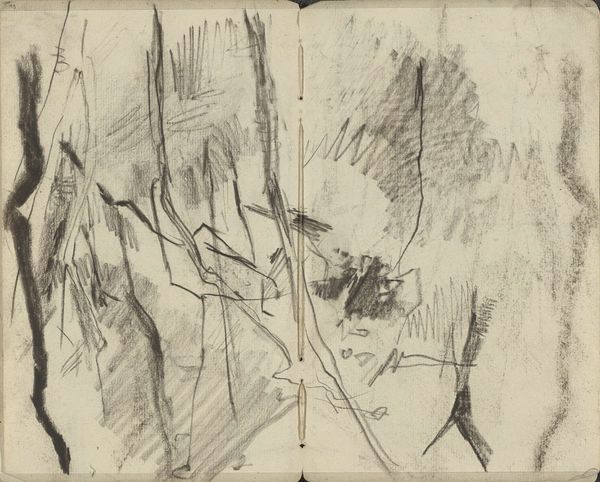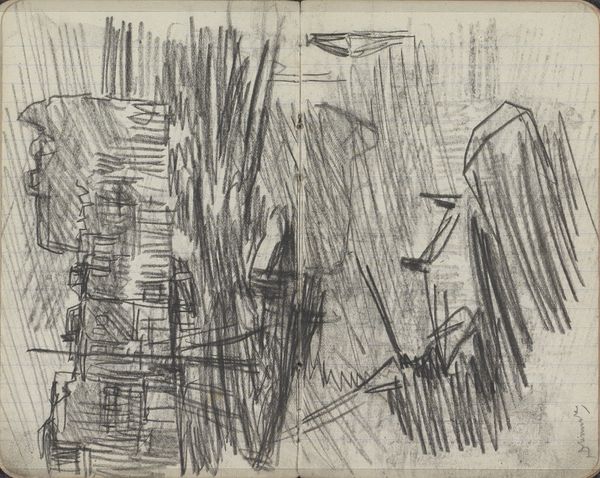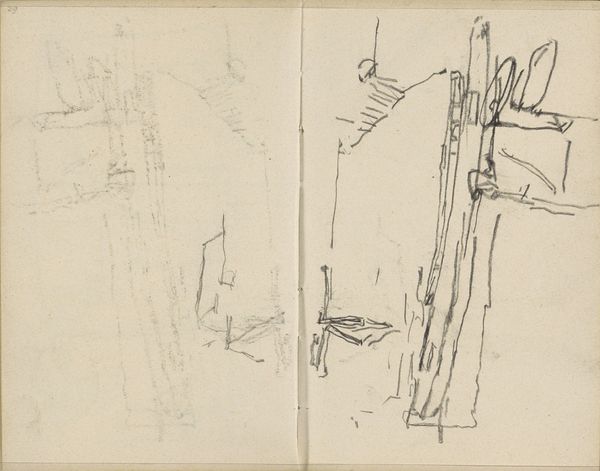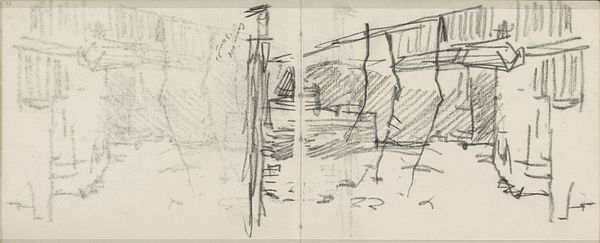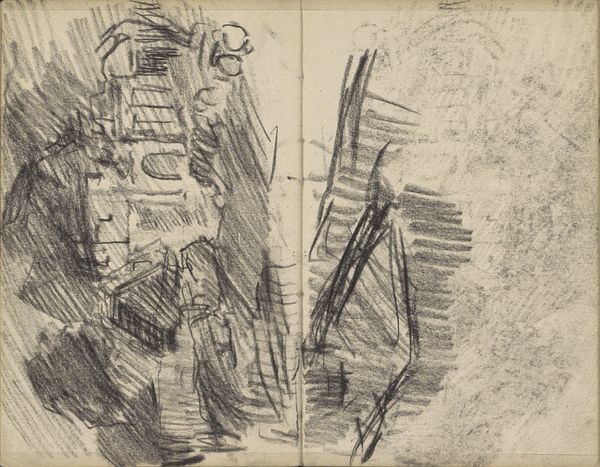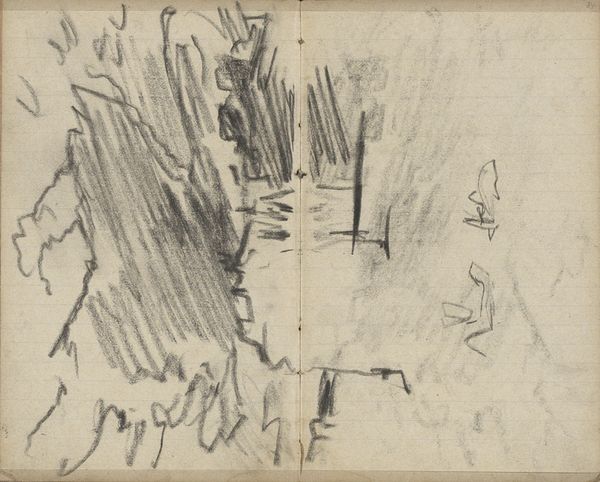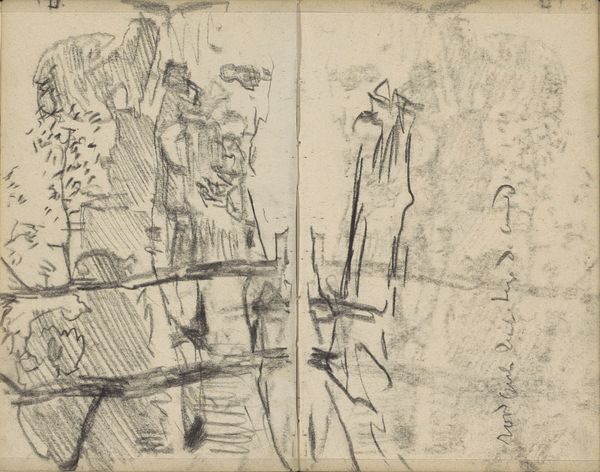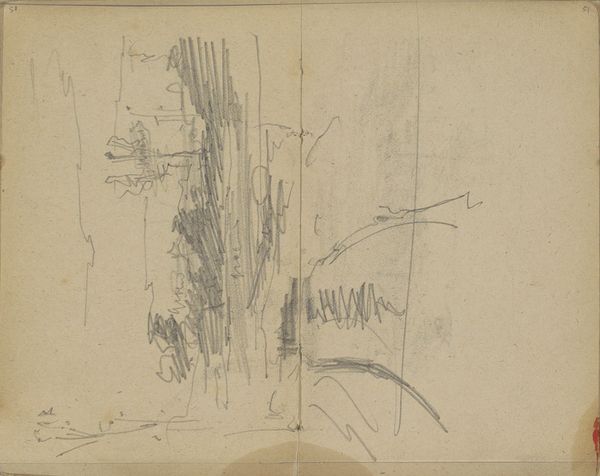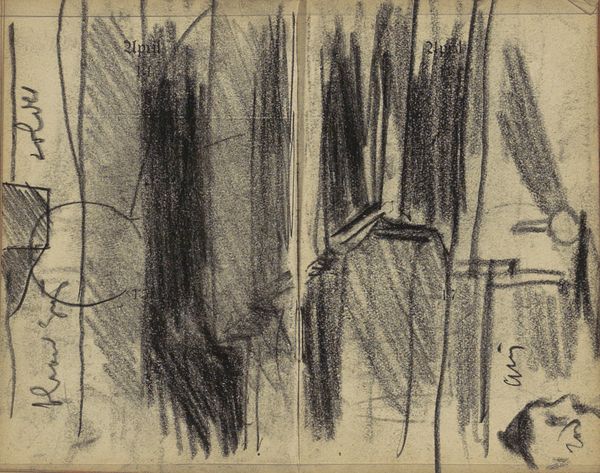
Copyright: Rijks Museum: Open Domain
Curator: This drawing, titled "Landschap," was created by George Hendrik Breitner sometime between 1907 and 1909. You can find it here at the Rijksmuseum. It’s rendered in graphite. What are your first impressions? Editor: It strikes me as remarkably raw and immediate. The graphite work is quite varied; some lines are densely layered and others are merely gestural, creating a dynamic yet somewhat unfinished visual experience. Curator: It’s intriguing how Breitner captures the Dutch landscape in a state of rapid urbanization, yet retains this element of the raw. Breitner gained renown chronicling Amsterdam’s streets, and he also dedicated time to capturing natural landscapes, frequently choosing locales affected by urban development. The graphite here seems an efficient medium for rapidly capturing a scene. Editor: The composition feels distinctly split, divided right down the middle. It sets up an interesting formal tension. Notice how the density on the left creates an almost sculptural form, contrasting with the lighter, atmospheric strokes on the right? The tonal contrasts draw you in. Curator: And that composition echoes Breitner’s own social positioning as someone documenting the city from a bit of a distance, one foot in and one foot out. He himself preferred portraying ordinary people from lower social classes and often did that as a detached observer. His landscape drawings were more personal endeavors. Editor: It’s the immediacy I find compelling, particularly the unblended marks. It really speaks to capturing a transient moment in time. And it avoids sentimentality; it’s tough in its honesty, a snapshot of nature’s own ongoing composition. Curator: Indeed, and despite the drawing’s sketch-like nature, Breitner manages to weave a narrative of the ever-evolving Dutch landscape, hinting at urbanization even in the periphery. That to me really is the lasting success. Editor: Looking closer now, it’s that initial visual impact—the stark contrast and almost violent application of graphite—that truly resonates, creating a visceral representation of a place in flux. Curator: Exactly. He invites the viewer to witness history unfolding in real-time, unedited, in the countryside of all places.
Comments
No comments
Be the first to comment and join the conversation on the ultimate creative platform.
